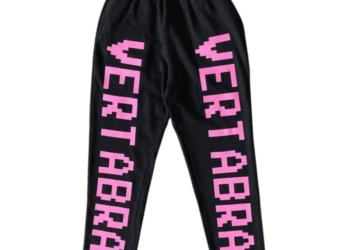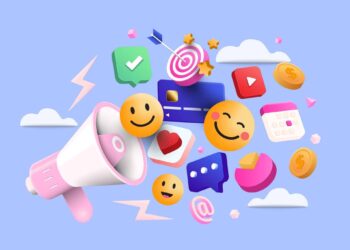In a brief definition of a website, the web design refers much to the site’s total look as it is displayed on the internet. The main connotation is that the design refers to the user experience aspects of website development morae than its software development.
It was only in the recent past years that designing websites was focused mainly for desktop browsers. In the mid-2020s onwards, designing for mobile phones and tablet browsers are the trending programming activities because they were becoming more important (and popular, as well.)
Continuous work
For designers, the website design Brisbane is one continuous process of conceptualizing, planning and building a collection of electronic files.
All of these will determine many things. It determines the layout, the colors, the text styles, the structure, the graphics, and the images for your brand and products.
Added to these is the use of interactive features to deliver the pages to your visitors. Your marketing can grab the people’s attention for them to take action. Finally, it is your web design that often decides whether or not the users will make the purchase (conversion).
Design
The pages on the site are all designed with a focus on simplicity. This is to avoid having extraneous information and functionality distracting or confusing users.
A good mark on a designer’s output is having a site that wins and provides trust to the target audience. The key is getting rid of the many potential points of user frustration doing business on the site.
Good website design is planned for easier use and form. Appearance, for instance, relates to the colors, font, and images used. Layout refers to how information is structured and categorized.
The good web design should be easy to use, aesthetically pleasing, and suits the user group and brand of the website.
User experience (UX)
Web design used to be focused on designing websites for desktop browsers. Since the mid-2010s, design for mobile and tablet browsers has become ever-increasingly important.
Web design refers to the design of websites that are displayed on the internet. Today, it refers mostly to the user experience aspects of website development rather than software development.
Looks and function
Website design determines everything about your site. This includes the contents, the way it looks and the way it works. The design is actually more than the visual presentation of the website.
One important function for the design is that it should also consist of usability, user interface and the architecture of the site itself – the things that are underneath the surface.
Once these are improved and enhanced, there will be a lower abandonment rate (clicking away to another site).
Adaptive and responsive designs
At present, two of the most common methods for designing websites that had proved to work well both on desktop and mobile are responsive and adaptive design.
In responsive design, content moves dynamically depending on screen size. In adaptive design, the website content is fixed in layout sizes that match common screen sizes.
The idea is to preserve the layout that is as consistent as possible between devices. This is crucial to maintaining user trust and engagement. Since responsive design can present difficulties in this regard, designers are now carefully relinquishing control of how their work will appear.
Benefits
A professional-looking design certainly helps in making your business appear credible.Customization of your website design canhelp determine the speed and cost of getting your site up and running.
Giving your customers the satisfaction that your design meets their needs is one big factor. The design tells them what they want to know without the confusing and unnecessary items on the design.
With it, the navigation on your site should be predictable, consistent and easy to understand, the things that your visitors want.
Search engines
Site designer always strive that the right design for your site will attract search engines. The fact is that however appealing your site design looks, it will not show up on search engine results pages, all simply because it is not coded in a way that the search engine can read.
The ideal design is being able to avoid technical glitches that can turn customers away. Lengthy loading times, broken links, dropped images are just some of the common design issues that can do these. Fortunately, they can all be fixed.
The important dual purpose of sites is reaching out to both the customers and search engines alike. Today’s many sites are all into this.
Credibility
Surveys have shown that 75% of users based the credibility of a business by the design of its website. In turn, credibility certainly pushes on how likely people will decide to make a purchase.
There is need to have your website convey that you are a legitimate and trustworthy business. Often enough, this is mostly determined by the quality of your web design.Poor design loses customers.
Importance
Your site design is the main face of your business which is also why it has to be the right design. This is a powerful tool that puts the message of your business across.
The well-designed site that fits your brand should be able to lead customers to your site. In the site, you can then guide them to that action with your site’s design elements. You need to be sure that your customers can navigate easily inside your site and will not lose time.
An elegant professional look will make people connect with your branding. Creative and simple sites send the message to users that your brand is useful, modern, and service-based.
User-friendly pages make customers more likely to reach out to connect with you.
Responsive and functional
With more and more users doing business on their mobile phones these days, you can take advantage of the situation by having a responsive design and attract new set of customers to your site.
The aim is to gear your site to people who are not always in front of their computers, are mobile, and extensively using today’s technology.
Aside from responsiveness, your site must have the design that should have the blend of logic and creative thought. Aesthetics always give an edge in having an emotional appeal. This is easily translatable into action for the users involved.
Brand connection
An elegant professional look to your site make people connect with your branding. Inside your site, guide them with your site’s easy navigation. Your well-designed site that fits your brand can easily leads your customers to your site.
A professional look that’s elegant truly makes people connect with your branding. Creative-looking sites bring the message to users that your brand is useful, modern, and service-oriented. User-friendly pages like this make customers more likely to reach out and connect with you.






